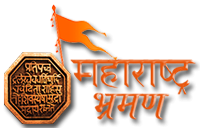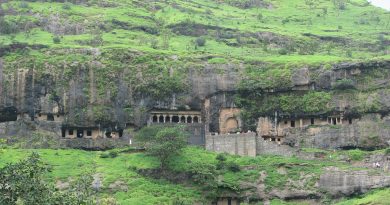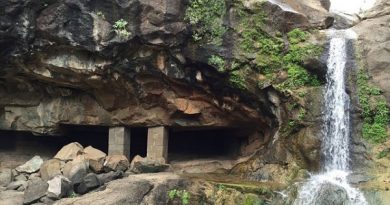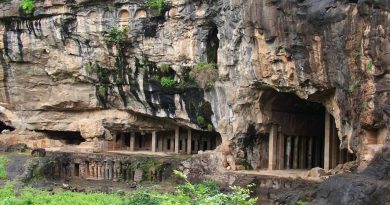Pandavleni Caves
The caves were carved out from the 4th century BC till 12th century CE as abodes for the idols..
Pandu Leni, (also known as Trirashmi Caves and other variations) (Leni is Marathi word for caves), are a group of 24 caves carved between 3rd cent. B.C. to 2nd cent. AD,representing the Hinayana Buddhist caves and has nothing to do with the characters of Mahabharata(the Pandavas).Most of the caves are Viharas except for the 18th cave which is a Chaitya. The location of the caves is a holy Buddhist site and is located about 8 km south of Nashik, Mahara shtra, India.
Caves:
The caves were carved out from the 4th century BC till 12th century CE as abodes for the idols of the local kings. The caves lodge idols of Buddha and Bodhisatva. Some caves are intricately connected by stone-cut ladders that join them to the other caves. Steps lead to the caves from the bottom of the hill. The peak of the Pandavleni is also accessible by trekking of about 20 mins but the path is well built with steps.
Some of the caves are large and contain numerous chambers – these rock-cut caves served as a viharas or monasteries for the disciples to meet and hear sermons. They contain interesting sculptures. One of the vihara caves is older and finer in sculptural detail and is thought to be nearly as old as the Karla Cave near Lonavala. Another cave (cave No. 18) is a Chaitya and is similar in age to the Karla Cave and has a particularly elaborate facade.
The site has an excellent ancient water management system and skillfully chiseled out of solid rock are several attractive water tanks.
Attractions:
Inscriptions in caves 3,11,12,13,14,15,19 & 20 are legible. Cave 15 – ‘Sri Yajna Vihar’ inscription mentions Sri Yajna Satkarni, the last Satvahana King who ruled over the western Maharashtra. Similar inscription in cave 3 at Kanheri. This means probably the cave was carved during the beginning of 3rd century A.D. Other inscriptions note the names Bhattapalika, Gautamiputra Satkarni, Vashishthiputra Pulumavi of the Satvahanas and two of the Kshatrapas, Dakshamitra and Ushavadant. Cave 10 – ‘Nahapan Vihar’ is spacious with 16 rooms.
Since the caves were inhibited by the Mahayana as well as the Hinayana sects of Buddhism, one can see a nice confluence of structural and carvings.
How to Reach :
The caves are located high in the mountains of Pandavleni. Some caves are intricately connected by stone-cut ladders that join them to the other caves. Steps lead to the caves from the bottom of the hill. The peak of the Pandavleni is also accessible by trekking of about 20 mins but the path is treacherous and dangerous.




